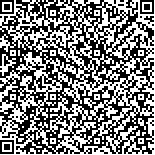| 引用本文: | 吴楷,张艳荣,孔祥明,邹志龙,张朝阳.基于疲劳内聚力模型的瓷砖-砂浆界面温度疲劳特性分析[J].建筑材料学报,2023,26(4):403-411 |
| |
|
| |
|
|
| 本文已被:浏览 170次 下载 446次 |

码上扫一扫! |
|
|
| 基于疲劳内聚力模型的瓷砖-砂浆界面温度疲劳特性分析 |
|
吴楷1,张艳荣1,孔祥明2,邹志龙1,张朝阳2
|
|
1.北京交通大学 土木建筑工程学院,北京 100044;2.清华大学 土木工程系,北京 100084
|
|
| 摘要: |
| 建立了疲劳损伤演化与内聚力耦合模型,模拟了不同温度循环作用下瓷砖-砂浆的界面损伤行为,并分析了温度变化幅值、作用次数和砂浆厚度对损伤的影响规律. 结果表明:疲劳内聚力模型可较好地模拟温度循环作用下瓷砖-砂浆的界面损伤行为;瓷砖-砂浆的界面损伤主要源于二者在界面处的剪切变形,且降温的影响远大于升温;随着温度作用次数的增加,界面损伤从瓷砖边缘处萌生并逐渐向中心扩展,但损伤增长速率逐渐降低;温度变化幅值增加和砂浆厚度突变均会加剧界面损伤及其发展速率,且砂浆厚度突变导致的界面损伤主要集中在较厚侧. |
| 关键词: 瓷砖-砂浆界面 温度疲劳特性 疲劳内聚力模型 数值模拟 有限元法 |
| DOI:10.3969/j.issn.1007-9629.2023.04.010 |
| 分类号:TU767.2 |
| 基金项目:中央高校基本科研业务费科技领军人才团队项目(2022JBXT010);高等学校学科创新引智计划项目(B20040) |
|
| Temperature Fatigue Characteristics of Tile-Mortar Interface Based on Fatigue Cohesive Zone Model |
|
WU Kai1, ZHANG Yanrong1, KONG Xiangming2, ZOU Zhilong1, ZHANG Chaoyang2
|
|
1.School of Civil Engineering, Beijing Jiaotong University, Beijing 100044, China;2.Department of Civil Engineering, Tsinghua University, Beijing 100084, China
|
| Abstract: |
| A coupling model of fatigue damage evolution and cohesive zone equations was developed to simulate the damage behaviors of tile-mortar interface under various temperature loadings. The effects of temperature variation amplitudes, cyclic times and mortar thickness on the interface damage were analyzed. Results show that the proposed fatigue cohesive zone model is feasible for the simulation of damage behaviors of tile-mortar interface under temperature cycles. The interface damage is mainly caused by the shear movements between the tile and mortar. The effect of cooling is much greater than that of heating on the interface damage. With increasing temperature cycles, the interface damage initiates at the edge of tile, and extends to the middle of tile in a decreasing growth rate. Increases of temperature variation amplitudes and a sudden thickening of mortar will accelerate the initiation and evolution of interface damage. The damage generating by the sudden thickening of mortar mainly appears in the thicker side. |
| Key words: tile-mortar interface temperature fatigue characteristic fatigue cohesive zone model numerical simulation finite element method |
|